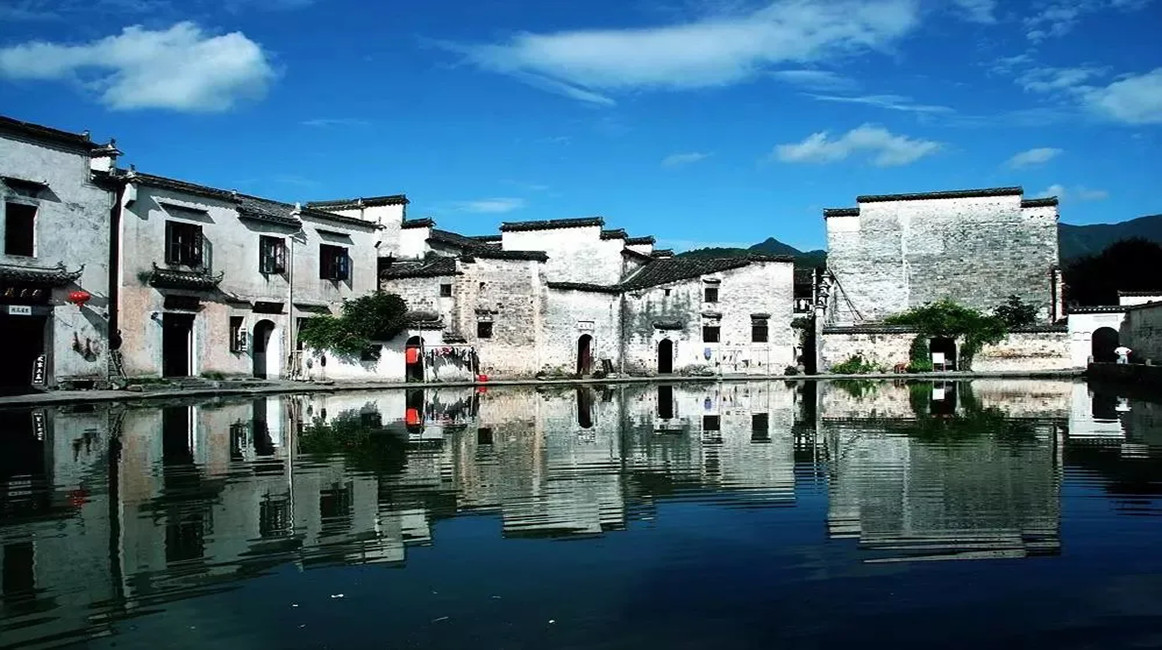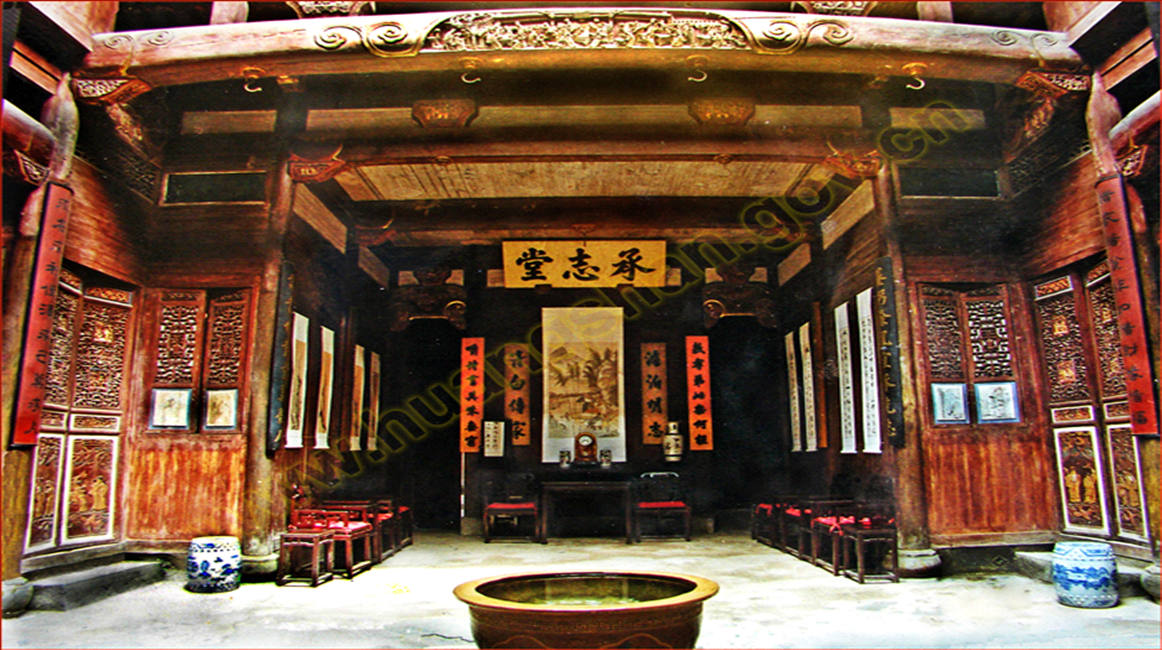Nestled in the mountainous southern Anhui Province (historically known as Huizhou), the region’s iconic Huizhou architecture stands as a masterpiece of Chinese traditional building art, seamlessly blending with the rolling hills, misty water towns and lush bamboo forests. For over 800 years, this architectural style—defined by whitewashed walls, black-tiled roofs, and intricate carvings—has been intertwined with the area’s natural beauty, rich history and vibrant culture. Today, it is celebrated worldwide as a symbol of China’s harmonious relationship between human creation and nature, drawing architects, historians and travelers from every corner of the globe.
🖼️ Landscape and Architecture: A Living Chinese Painting

Huizhou’s scenery is a canvas where architecture and nature dance together. The most famous examples are Hongcun and Xidi, two ancient villages named UNESCO World Heritage Sites in 2000. Hongcun, dubbed the "Village in a Painting," is laid out like a giant ox: the surrounding hills form the ox’s head, ancient trees its horns, the village its body, and a winding water system its blood vessels. White-walled houses with upturned horse-head walls (ma tau qiang) line the waterways, their black tiles contrasting sharply with the green of the mountains and the blue of the lakes—an image straight out of a classical Chinese landscape painting.
Beyond the villages, Huangshan (Yellow Mountain) towers nearby, its granite peaks shrouded in clouds and pine trees clinging to steep cliffs. The mountain’s dramatic scenery has inspired Huizhou architects for centuries, who incorporated its rugged beauty into their designs—using local stone for foundations and wooden beams carved to resemble mountain pines.
🍲 Huizhou Cuisine: Flavors of the Mountain Village

Huizhou cuisine, one of China’s eight great culinary traditions, is a reflection of the region’s geography: simple, hearty and rooted in local ingredients. The star dish is Stinky Mandarin Fish (Chou Gui Yu), a fermented fish that has been a local specialty for over 200 years. Though its aroma is pungent, the flesh is tender and flavorful, usually cooked with ginger, garlic and chili. Another must-try is Braised Bamboo Shoots with Fermented Tofu, which highlights the fresh bamboo shoots harvested from the surrounding mountains, paired with the creamy, savory taste of fermented tofu.
No meal is complete without Huangshan Maofeng Tea, a delicate green tea grown on the slopes of Huangshan. Its mellow, sweet flavor complements the rich Huizhou dishes perfectly. For dessert, Huizhou Pastry—such as sesame cakes and osmanthus cakes—offers a sweet finish, made with local honey and dried fruits. These dishes are not just food; they are a taste of Huizhou’s rural life, where people have lived off the land for generations.
🏯 Historical Relics: Echoes of a Prosperous Past

Huizhou’s historical relics tell the story of the Huizhou merchants (Huishang), who dominated China’s trade from the Ming to Qing dynasties (1368-1912). The Hu Family Ancestral Hall in Xidi is a prime example: its grand courtyard, carved stone archways and intricate wood, brick and stone carvings (the "Three Carvings" of Huizhou) showcase the wealth and artistic taste of the Huizhou merchants. The carvings depict everything from dragons and phoenixes (symbols of good fortune) to scenes of farming and trading, offering a window into the region’s past.
Another important site is the Chengkan Village, built according to the principles of Feng Shui (Chinese geomancy). Its layout follows the pattern of the Bagua (Eight Trigrams), with streets and alleys winding around a central hill, designed to channel positive energy and protect the village from natural disasters. This fusion of ancient philosophy and architecture is a testament to Huizhou’s deep cultural roots.
🎨 Cultural Heritage: Art and Tradition in Every Detail
Huizhou’s culture is embedded in every detail of its architecture and daily life. The "Three Treasures of Huizhou"—Hui ink (Hui Mo), She ink slabs (She Yan) and Xuan paper (Xuan Zhi)—are revered in Chinese art circles for their superior quality. Hui ink, made from pine soot and animal glue, has been produced for over 1,000 years and is prized by calligraphers and painters worldwide. She ink slabs, quarried from the stone of Longwei Mountain, are known for their smooth surface and ability to hold ink.
The region is also home to Huizhou Opera, one of the precursors of Beijing Opera. With its vivid costumes, bold singing and acrobatic performances, it has been a part of local life for centuries, often staged in village courtyards during festivals. Even today, elders gather to sing Huizhou Opera in the streets of Hongcun and Xidi, keeping the tradition alive.
🌍 Global Influence: A Legacy for the World

Huizhou architecture has left an indelible mark on the global architectural community. Its emphasis on sustainability—using local materials like stone, wood and clay, and designing buildings to adapt to the local climate (e.g., horse-head walls for fire prevention and water drainage)—has inspired modern green architecture worldwide. Architects from Europe, the United States and Japan have visited Huizhou to study its passive cooling systems and Feng Shui-inspired layout, incorporating these ideas into contemporary designs.
In addition, the UNESCO recognition of Hongcun and Xidi has brought Huizhou’s beauty to the world stage. Each year, millions of foreign tourists visit the region to marvel at its architecture, hike Huangshan and experience rural Chinese life. Huizhou has also become a popular location for international film and photography projects, with its timeless scenery appearing in movies like Crouching Tiger, Hidden Dragon.
Huizhou is more than a region of stunning architecture and scenery—it is a living museum of Chinese culture. Here, the past and present coexist: ancient villages stand beside modern tea shops, master craftsmen continue to make Hui ink by hand, and the mountains still inspire artists as they did centuries ago. To visit Huizhou is to understand the soul of traditional China, where human creativity and nature exist in perfect harmony.



